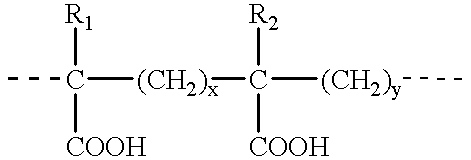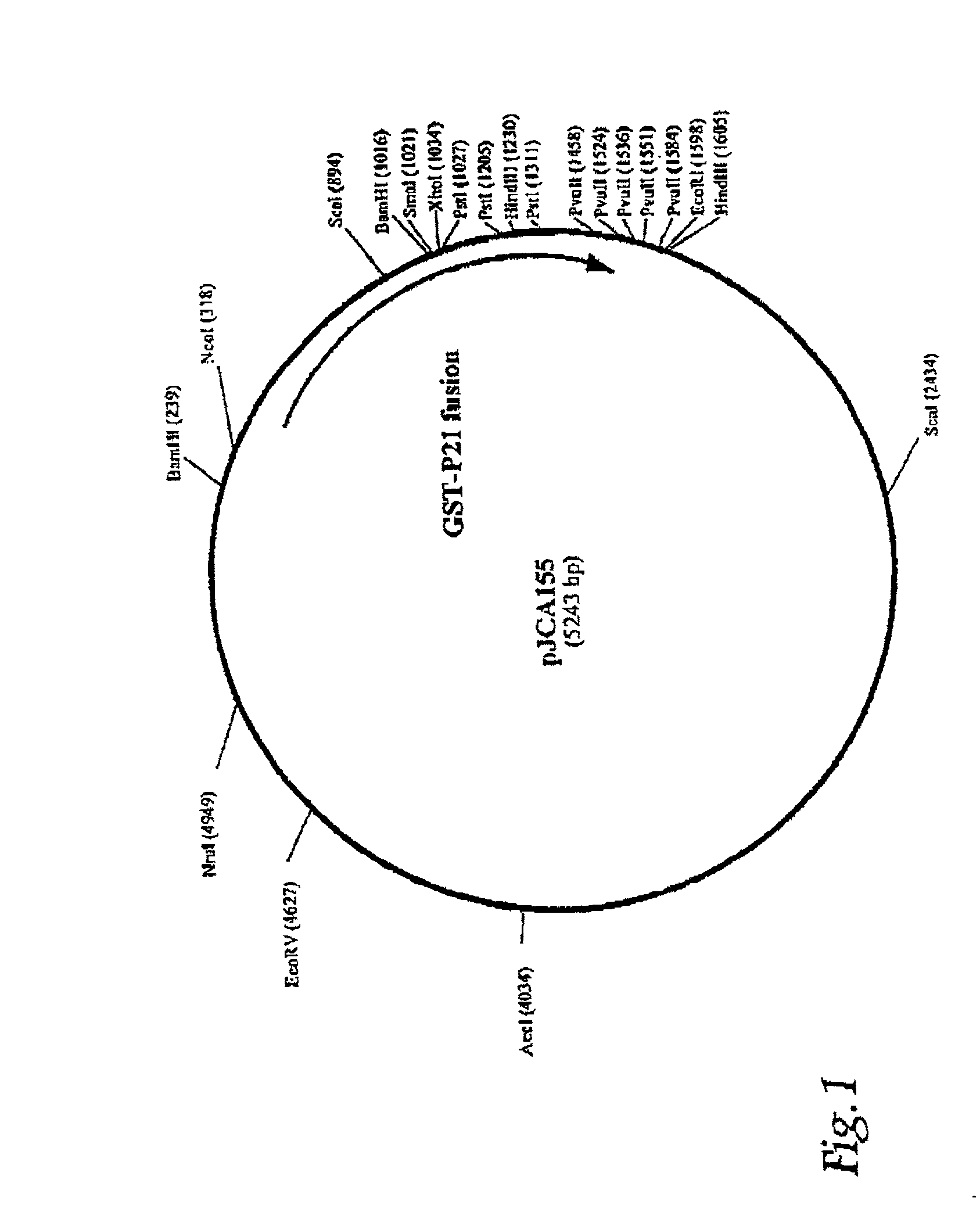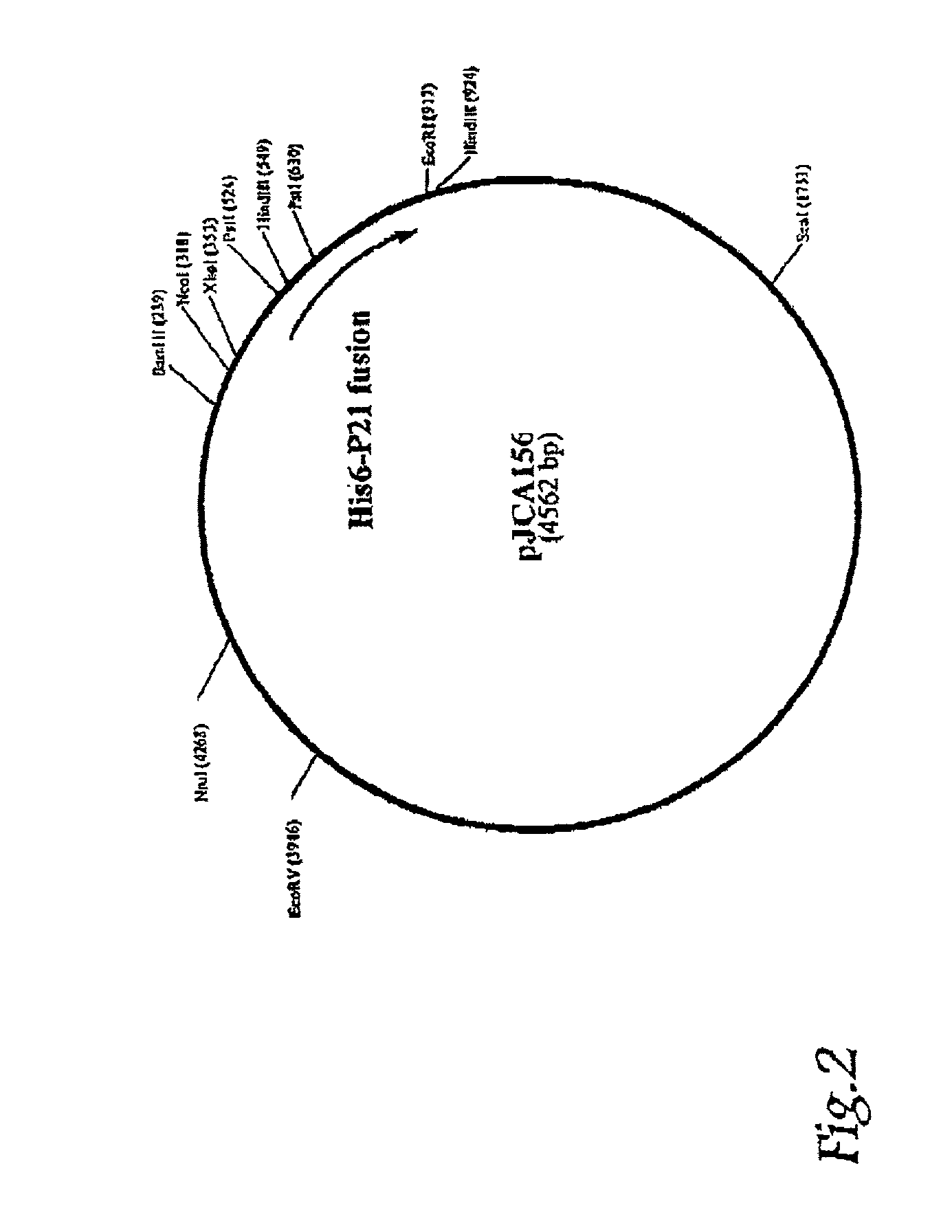Compositions and vaccines containing antigen(s) of cryptosporidium parvum and of another pathogen
a technology of cryptosporidium parvum and antigen(s) of another pathogen, applied in the field of compositions and vaccines, can solve the problems of not being able to cause important clinical signs of disease in experimental challenge models, substantial economic loss in the farming industry, term detrimental effects, etc., and achieves improved or useful immune response, greatly and unexpectedly improved parvum, and high antibody production
- Summary
- Abstract
- Description
- Claims
- Application Information
AI Technical Summary
Benefits of technology
Problems solved by technology
Method used
Image
Examples
example 1
[0127] Cloning of the C. parvum P21 and Cp15 / 60 Genes
[0128] Oocysts of Cryptosporidium parvum are isolated from an infected calf and are purified from bovine fecal samples as described by Sagodira S. et al. (Vaccine. 1999. 17. 2346-2355). Purified oocysts are then stored in distilled water at +4.degree. C. For use as a template for PCR reactions, genomic DNA is released from the purified oocysts as described by Iochmann S. et al. (Microbial Pathogenesis 1999. 26. 307-315).
[0129] An alternative source for C. parvum DNA is constituted by the EcoRI genomic libraries for the Cryptosporidium parvum Iowa (A), Iowa (I), KSU-1 and KSU-2 isolates available from the American Tissue Culture Collection (ATCC numbers 87667, 87668, 87439 and 87664 respectively). The specific P21 and Cp15 / 60 genes are isolated as follows
[0130] The sequence encoding the P21 protein is amplified by a polymerase chain reaction (PCR) using C. parvum DNA and the following primers:
[0131] oligonucleotide JCA295 (35 mer) ...
example 2
[0140] Construction of Plasmid pJCA155 (GST-P21 Fusion Protein in Vector pBAD / HisA)
[0141] The sequences required to express the GST-P21 fusion protein are amplified by PCR in order to generate 2 fragments that can be cloned easily into the pBAD / HisA expression plasmid vector (Cat# V430-01 InVitrogen Corp., Carlsbad, Calif. 92008, USA). The first PCR is done using the pGEX-2TK plasmid (Cat# 27-4587-01 Amersham-Pharmacia Biotech) and the following primers:
[0142] oligonucleotide JCA299 (35 mer) SEQ ID NO: 5
[0143] 5'TTT TTT CCA TGG GGT CCC CTA TAC TAG GTT ATT GG 3' and oligonucleotide JCA300 (45 mer) SEQ ID NO: 6
[0144] 5'TTT TTT CTC GAG CCT GCA GCC CGG GGA TCC AAC AGA TGC ACG ACG 3'
[0145] This PCR generates a fragment of about 720 bp encoding the GST moiety with the addition of a NcoI restriction site at the 5' end for cloning purposes into pBAD / HisA; this modification adds a Glycine codon to the GST-P21 fusion protein). This PCR fragment is then digested with NcoI and XhoI in order to ...
example 3
[0152] Construction of Plasmid pJCA156 (His6-P21 Fusion Protein in Vector pBAD / HisA)
[0153] The pBAD / HisA vector (Cat# V430-01, InVitrogen) is digested with Ncol and EcoRI and the # 3960 bp NcoI-EcoRI restriction fragment (-fragment E) is recovered and isolated as described in Example 2.
[0154] A PCR is done to amplify the sequence encoding the His6-P21 fusion and to add the NcoI and EcoRI restriction sites respectively in 5' and 3' in order to subclone this PCR fragment into the pBAD / HisA plasmid vector.
[0155] The PCR is done using C. parvum DNA and the following primers:
[0156] oligonucleotide JCA302 (65 mer) SEQ ID NO:8
[0157] 5'TTT TTT CCA TGG GGG GTT CTC ATC ATC ATC ATC ATC ATG GTC TCG AGT TTT CGC TTG TGT TGT AC 3' and oligonucleotide JCA296 (33 mer) SEQ ID NO: 2
[0158] This PCR generates a fragment of about 610 bp. This fragment is purified, and then digested with NcoI and EcoRI in order to isolate, after agarose gel electrophoresis and recovery with the GeneClean kit (BIO101 Inc.)...
PUM
| Property | Measurement | Unit |
|---|---|---|
| Current | aaaaa | aaaaa |
| Composition | aaaaa | aaaaa |
| Immunogenicity | aaaaa | aaaaa |
Abstract
Description
Claims
Application Information
 Login to View More
Login to View More - R&D
- Intellectual Property
- Life Sciences
- Materials
- Tech Scout
- Unparalleled Data Quality
- Higher Quality Content
- 60% Fewer Hallucinations
Browse by: Latest US Patents, China's latest patents, Technical Efficacy Thesaurus, Application Domain, Technology Topic, Popular Technical Reports.
© 2025 PatSnap. All rights reserved.Legal|Privacy policy|Modern Slavery Act Transparency Statement|Sitemap|About US| Contact US: help@patsnap.com



